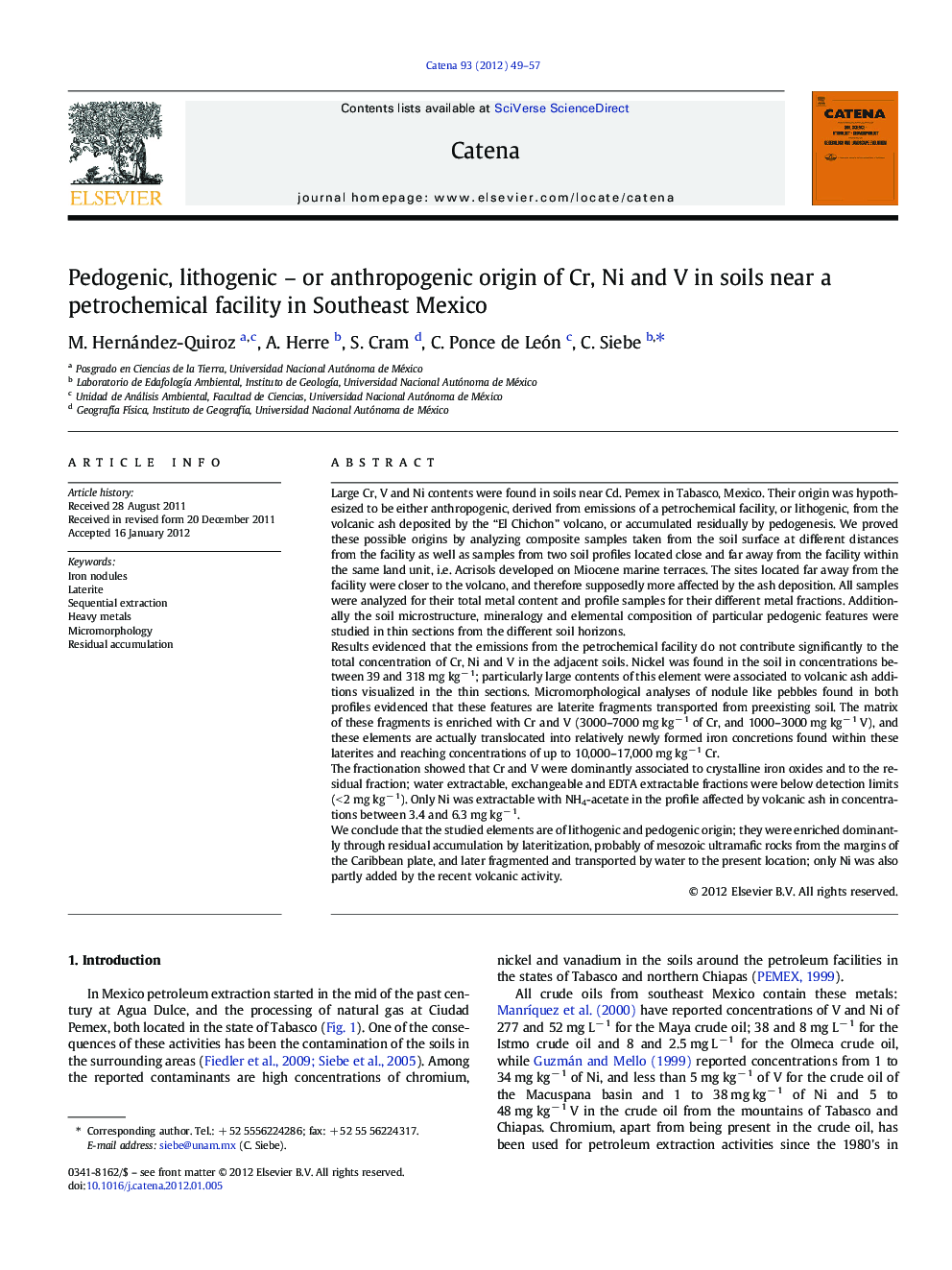| کد مقاله | کد نشریه | سال انتشار | مقاله انگلیسی | نسخه تمام متن |
|---|---|---|---|---|
| 4571873 | 1629259 | 2012 | 9 صفحه PDF | دانلود رایگان |

Large Cr, V and Ni contents were found in soils near Cd. Pemex in Tabasco, Mexico. Their origin was hypothesized to be either anthropogenic, derived from emissions of a petrochemical facility, or lithogenic, from the volcanic ash deposited by the “El Chichon” volcano, or accumulated residually by pedogenesis. We proved these possible origins by analyzing composite samples taken from the soil surface at different distances from the facility as well as samples from two soil profiles located close and far away from the facility within the same land unit, i.e. Acrisols developed on Miocene marine terraces. The sites located far away from the facility were closer to the volcano, and therefore supposedly more affected by the ash deposition. All samples were analyzed for their total metal content and profile samples for their different metal fractions. Additionally the soil microstructure, mineralogy and elemental composition of particular pedogenic features were studied in thin sections from the different soil horizons.Results evidenced that the emissions from the petrochemical facility do not contribute significantly to the total concentration of Cr, Ni and V in the adjacent soils. Nickel was found in the soil in concentrations between 39 and 318 mg kg− 1; particularly large contents of this element were associated to volcanic ash additions visualized in the thin sections. Micromorphological analyses of nodule like pebbles found in both profiles evidenced that these features are laterite fragments transported from preexisting soil. The matrix of these fragments is enriched with Cr and V (3000–7000 mg kg− 1 of Cr, and 1000–3000 mg kg− 1 V), and these elements are actually translocated into relatively newly formed iron concretions found within these laterites and reaching concentrations of up to 10,000–17,000 mg kg− 1 Cr.The fractionation showed that Cr and V were dominantly associated to crystalline iron oxides and to the residual fraction; water extractable, exchangeable and EDTA extractable fractions were below detection limits (< 2 mg kg− 1). Only Ni was extractable with NH4-acetate in the profile affected by volcanic ash in concentrations between 3.4 and 6.3 mg kg− 1.We conclude that the studied elements are of lithogenic and pedogenic origin; they were enriched dominantly through residual accumulation by lateritization, probably of mesozoic ultramafic rocks from the margins of the Caribbean plate, and later fragmented and transported by water to the present location; only Ni was also partly added by the recent volcanic activity.
► Water transported laterite fragments from pedorelicts are responsible for the large Cr, V and Ni contents in the studied soils.
► Nearby El Chichón volcano contributed also to the Ni contents.
► Petroleum processing activities have not contributed significantly to the observed metal contents.
Journal: CATENA - Volume 93, June 2012, Pages 49–57